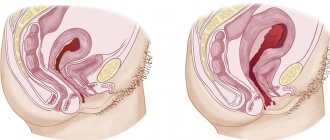Mixed feeding - what is it?
Mixed feeding is a special type of infant nutrition in which he eats an adapted formula and consumes mother's milk. Of course, it is much easier to switch your baby to bottle feeding. However, we must not forget about the benefits of breastfeeding. Together with natural food, the baby receives immunoglobulins, healthy proteins and nutrients, which allows its immunity to develop correctly.
When mixed feeding, the adapted mixture should make up no more than 50% of the total food consumed. A pediatrician will help you choose the ideal diet. Modern formula manufacturers create products for ordinary children and babies with special nutritional needs, partially adapted and customized.
What to feed from
Many mothers prefer to give the mixture to the baby in a bottle with a nipple. This is very convenient, but it is dangerous because he will stop taking the breast, because then you have to work, the milk itself will not flow into the mouth. There are other ways to satisfy a little person’s hunger.
teaspoon
In pharmacies and specialized stores you can purchase not only medicinal mixtures from domestic and foreign manufacturers, but even devices and systems for feeding. A teaspoon is a good and fairly simple option for a small amount of nutrition. If you feed the baby with it, the baby will not stop suckling.
Syringe pipette
When, for some reason, your little son uses the formula only reclining on his mother’s lap or in an upright position, it makes sense to purchase a product such as a plastic syringe pipette. True, in order to feed the baby, you will need a lot of time and patience.
Cup
If the tongue muscles work normally in infancy, it will be possible to avoid both abnormal bite and incorrect diction in the future. The baby's cup forces them to develop, because in order to eat, the baby has to work. This device, like a spoon, is easy to wash, but the liquid spills out of such dishes, making it impossible to use it while walking.
SNS system
A technology is popular in foreign countries, thanks to which, according to experts, an infant receives the required volume of formula and has direct contact with the mother. The SNS system has been developed for feeding babies.
A small tube is inserted into a bottle filled with formula and directed towards the nipple. This option has its drawbacks, since it cannot be used if a woman temporarily stops putting her son or daughter to her breast. The baby often spits out the tube. It takes a long time to wash and clean the system.
bottle
Neither a cup, nor a syringe, nor a spoon will help your son stop suckling. Only a bottle can provoke refusal. In order to satisfy hunger in this way, by drinking milk, the baby does not need to work.
Give together or separately
An adapted formula for a newborn baby can be combined with breast milk. There are two options for introducing supplementary feeding:
- the mixture is combined with breast milk and given to the baby from a bottle;
- Breastfeeding and supplementary formula feeding are performed separately, breastfeeding and IV are alternated.
Adding milk to the mixture
The undoubted advantage of combining breast milk and formula is that it is easier for the baby to eat such food. Sucking from the bottle does not require effort; the stream flows out on its own and is regulated by the number of holes in the nipple.
The downside of this type of nutrition is that the child does not have full physical contact with the mother. Lack of stimulation of the mammary gland leads to even less milk production.
Important! The rule of thumb in the GW is: demand creates supply. The less a child requires natural food, the less quantity it is produced.
Formula before or after breastfeeding
This supplementary feeding method is considered more preferable and popular. It has no disadvantages, since it satisfies all needs - the child is fed, and the mammary glands are stimulated.
Doctors recommend breastfeeding before offering a bottle. In this case, there is a chance that the child will switch completely to breastfeeding. When the baby sucks mother's milk, but remains hungry, you can offer formula. The more the baby sucks, the more natural food will be produced by the mother's body.
Blend selection
Some parents don’t pay much attention to the nutrition of newborns, buying the first package they come across. Supplementary feeding for a child up to 6 months must be taken according to a prescription. The composition of the mixture should contain the largest amount of substances present in breast milk.
It will take about 3 days to determine whether the composition of the package is suitable for an infant. You should not buy food with palm oil, since such a substance interferes with the absorption of calcium.
When choosing a mixture, you need to pay attention to whether it contains components in the form of:
- whey from milk;
- taurine;
- Omega 6 and 3 acids.
If there is a 1 on the package, this indicates that the composition of the product is close to human milk.
For supplementary feeding, pediatricians recommend the Russian Malyutka, which contains prebiotics, lactose and iodine. But soy lecithin often provokes allergies.
In addition to these components, the Semilak 1 mixture contains taurine. It is produced by a Spanish company and is suitable for infants who suffer from colic and constipation.
Nutrilon 1 is produced by a German company based on whey, but with the addition of palm oil. The powder dissolves well, is quickly absorbed, and helps strengthen the immune system.
Not every woman can afford Nanny 1. The cost of a package exceeds a thousand rubles, but this mixture does not cause allergies in an infant and is valued for the presence of prebiotics. This food is made from goat milk. For premature babies, doctors advise buying a mixture called Humana Expert.
Infants like to be given Hipp 1 as complementary food because it has a pleasant smell and taste, but pediatricians do not recommend this food for babies.
Agusha fermented milk mixture is produced in Russia. When consumed, an infant’s digestion is normalized and constipation goes away, but due to the presence of palm oil, there is a risk of allergies. Many positive reviews have been written about Nutrilak Premium, but buying it is problematic.
When feeding an infant with a balanced composition of Nan 1 Premium, immunity improves (fish oil is added to it).
Power calculations
For children over 10 days old, three calculation options are used that give very similar results. The first method is volumetric, according to which the daily amount of food is: - for a baby up to one and a half months it is 1/5 of the body weight, - for a baby from one and a half to 4 months it is 1/6 of the weight, - from 4 to 6 months it is 1/2 7 body weight, After six months 1/8 body weight, but not more than 1000 ml for children under one year old. This is the maximum daily volume of milk for children of the first year of life; you cannot give more of it - there will be overfeeding. There is also a calorie calculation method and calculation of the amount of food based on protein, but only doctors can carry them out. These methods are complex and require tables, but the voluminous method is used most often in practice because of its simplicity and clarity. The volume of one feeding is calculated by dividing the daily volume by the number of feedings. Children under six months should have at least 7-8 of them per day. At each feeding, it is permissible to fluctuate the feeding volume in each direction by 10-20 ml, due to the difference in appetite during the day.
How to combine breastfeeding with artificial feeding?
If you suspect a lack of milk, you need to understand the situation and make every effort to maintain breastfeeding:
- Carry out control weighing at least 4-5 times a day (the child must be weighed before and after feeding, in the same clothes) to clarify the amount of milk sucked and the degree of its deficiency.
- Keep a daily feeding diary.
- Switch to a free feeding regime, with mandatory night feedings.
- During feeding, place the baby on both breasts. Express the remaining milk.
- Use breast pumps that will stimulate the mammary glands and help increase lactation.
- Consult a doctor who, if necessary, will prescribe medications and herbal medicine to increase lactation.
When, despite all the measures taken, lactation is insufficient and supplementary feeding is necessary, then feeding becomes mixed.
When and how to add the mixture?
Mixed feeding means feeding with breast milk if its amount is at least 1/5 of the daily nutrition.
The introduction of supplementary feeding is stressful for the child, so the transition to mixed feeding should be justified and carried out gradually, replenishing the missing amount of breast milk with an adapted formula.
Currently, there is a wide selection of modern infant formulas that take into account the characteristics of metabolism, digestion, as well as the child’s age-related needs for macro- and microelements, vitamins and energy.
The composition of the “initial” formulas is maximally adapted to breast milk. Modern technologies make it possible to create products containing almost all nutrients in quantities close to their levels in breast milk. By improving the quality of the protein component, its concentration was reduced to 1.2–1.4 g/100 g. The lipid component is formed from mixtures of vegetable oils. The content of vitamins and minerals in the mixtures corresponds to the physiological needs of children in the first six months of life. Also, the composition of the “initial” mixtures may include taurine, L-carnitine, oligosaccharides, probiotics, polyunsaturated fatty acids, which are found in breast milk.
Subsequent mixtures contain more protein (1.5–2.1 g/100 g). The energy value of these mixtures is higher due to the higher content of carbohydrates and protein. The products contain vitamins and minerals (iron, calcium, phosphorus, magnesium, etc.) in accordance with the age-related needs of children in the second half of life.
Adapted fermented milk mixtures can be used in the nutrition of healthy children of the first year. These products are prescribed for those at risk of developing nutritional-dependent conditions, dysbiotic disorders, decreased appetite, and frequent respiratory diseases.
Along with traditional artificial milk formulas for feeding newborns, there are medicinal formulas for children with intolerance to cow's milk protein, lactase deficiency, impaired absorption of fats, a tendency to regurgitate, and for premature babies. Remember that only a doctor can prescribe medicinal and fermented milk mixtures after examining the baby and making an appropriate diagnosis.
Choosing an artificial formula is a responsible decision; the baby’s health depends on it, because the baby’s nutrition at an early age shapes the metabolism, which affects his health for the rest of his life.
Be sure to consult with a specialist before choosing a formula for your baby. Independent selection of artificial formula can lead to negative consequences for the child’s health.
How to prepare milk formula?
The first thing you need to do when buying baby food is check the expiration date. Before preparing formula for feeding your baby, read the instructions carefully.
Pay attention to:
- period and storage conditions of an open jar with the mixture;
- proportions of water and dry powder;
- amount of powder for children of different ages.
Always wash your hands thoroughly with soap and water before preparing the mixture. To prepare the mixture, water must be boiled. This also applies to special bottled baby water. The temperature of the formula should be 36–37 °C, the same as breast milk. To obtain this temperature, you need to pour boiled water, cooled to 50–60 ° C, into a bottle. Using a measuring spoon, measure out the required amount of milk mixture, making sure to remove any excess. Pour the powder into water and stir quickly until completely dissolved. Close the bottle tightly and shake thoroughly. Before feeding, pay attention to the temperature of the mixture.
Prepare the formula for one feeding only. The thing is. that milk formula is a nutritious product, and therefore it is a favorable environment for the proliferation of microorganisms. In this regard, the remaining mixture after feeding must be poured out.
After feeding, wash baby dishes thoroughly and sterilize them. For convenience and saving time, purchase a sterilizer - a very convenient and necessary thing for mom. In just a few minutes, it will effectively destroy germs in baby dishes and pacifiers.
Infant milk formulas are divided into:
- “Initial” – from birth to 6 months of life (marked with the number 1).
- “Subsequent” – from 6 to 12 months (marked with the number 2).
- In addition, formulas “from 0 to 12 months” are used in the nutrition of children in the first year of life.
How to administer the mixture?
You need to start feeding your baby with breast milk. Feeding mode on demand. The baby must be fed from both mammary glands and only after that offer the formula, which is introduced into the child’s diet gradually, over 5–7 days. On the first day, the baby is offered formula in a small volume - no more than 1/3 of the recommended amount of feeding for age. Over the course of a week, if the child is feeling well and there are no allergic reactions or dyspeptic disorders (regurgitation, vomiting, diarrhea), the volume of the mixture is gradually increased. You can give only baby formula at one feeding. This scheme is convenient for mothers who need to leave for several hours every day.
Basic rules of mixed feeding
- Continue to place your baby on both breasts at each feeding.
- Feeding regimen at the request of the child.
- Regularly carry out control weighings to determine the amount of supplementary feeding with artificial formula.
- Use adapted formulas to feed your baby.
- Buy artificial mixtures only in large shopping centers and specialty stores or pharmacies. Always pay attention to the integrity of the packaging, expiration date and storage conditions of the product.
- Always strictly follow the instructions for use of the mixture on the packaging.
- Always wash and sterilize children's dishes thoroughly.
- After feeding, hold the baby in an upright position for 5-10 minutes to release any air that the baby may swallow during feeding.
What is the feeding volume for mixed feeding?
When calculating daily nutrition for your baby, you can rely on the following calculations:
- from 10 days to 2 months, the daily amount of food is 1/5 of the child’s body weight;
- from 2 to 4 months – 1/6 body weight;
- from 4 to 6 months – 1/7 body weight;
- from 6 to 12 months, the daily volume of food is 1000 ml, including complementary foods.
Approximate number of feedings per day:
- first week of life – 7–10;
- 1 week – 2 months –7–8 feedings;
- 2–4 months – 6–7 feedings;
- 4–9 months – 5–6 feedings;
- 9–12 months – 4–5.
Determine the volume of one feeding.
To do this, you need to divide the daily amount of food by the total number of feedings.
Example: a child 1 month old weighs 4200 g, eats 7 times a day. Per day he should receive: 4200: 5 = 850 ml of food (breast milk + formula if necessary). The volume of one feeding with seven meals a day will be: 850: 7 = 120–125 ml.
Your pediatrician will help you calculate the optimal amount of baby formula. He will take into account the individual characteristics of the child, his state of health and the maturity of the digestive system.
How to feed?
While feeding, take the baby in your arms, keeping in mind that the position should be comfortable for both the baby and yourself. You can position your baby correctly as follows:
- The position of the newborn's head is slightly higher than the body. It is best to bend your arm at the elbow and place the baby's head on the bend.
- During bottle feeding, the baby's position should be approximately the same as during breastfeeding.
- The bottle should be held slightly at an angle, but the nipple must be filled with the mixture.
- Under no circumstances should you leave your baby alone while bottle feeding.
- You should not leave a bottle in your baby's mouth while he is sleeping.
Continue to place your baby on both breasts at each feeding.
Feeding regimen at the request of the child.
Regularly carry out control weighings to determine the amount of supplementary feeding with artificial formula.
Use adapted formulas to feed your baby.
- Buy artificial mixtures only in large shopping centers and specialty stores or pharmacies. Always pay attention to the integrity of the packaging, expiration date and storage conditions of the product.
- Always strictly follow the instructions for use of the mixture on the packaging.
- Always wash and sterilize children's dishes thoroughly.
- After feeding the baby, hold the baby in an upright position for 5-10 minutes to release any air that the baby may swallow during feeding.
When might there not be enough milk?
Criteria for sufficiency of lactation:
- The baby calmly, rhythmically sucks the breast, swallowing, and one feeding takes about 20 minutes.
- After feeding, the baby releases the breast on his own and maintains his usual interval between feedings.
- The child is gaining weight well. The increase in the first month should be at least 600 g, then in the first half of the year 750–800 g monthly.
- With a sufficient amount of milk, the baby’s stool is mushy and homogeneous, in the first month - after each feeding. By 4–5 months, the frequency of stools decreases to 3–4 times a day.
- Frequency of urination more than 6 times a day (can reach 25 times a day). Urine is colorless and odorless.
- You can think about a lack of milk:
- If your baby has become restless and can no longer withstand the intervals between feedings.
- During feeding, the child makes mainly sucking movements, rarely swallowing.
- You are unable to express your breasts after feeding.
- The child is not gaining enough weight after ruling out other conditions that could cause it.
- Urinating less than 6 times a day, urine with a strong odor.
- Rare and dense stools.
Common mistakes made when mixed feeding:
- unjustified transfer of the baby to mixed feeding;
- frequent change of formulas used to feed the baby. It is necessary to assess the child's individual tolerance to the formula. But you can’t “jump” from one mixture to another every 1-2 days. Adaptation to a new type of diet occurs within 3–5 days;
- decreasing or increasing the required volume of formula for supplementary feeding of the baby;
- using whole cow's or goat's milk and kefir to supplement the baby's nutrition. Cow's milk and the milk of other animals can cause a deficiency of iron and other vitamins and minerals and contribute to the development of obesity;
- supplementary feeding in the form of formula milk is given before breastfeeding. It is necessary to first feed the baby from both mammary glands, and only then make up for the missing amount of nutrition with formula;
- placing the baby on only one breast during one feeding. It is necessary to attach the baby to both mammary glands at each feeding;
- Incorrect position of the baby when feeding from a bottle. It is necessary to hold the baby in the same way as when breastfeeding to maintain physical and psycho-emotional contact. The position of the bottle when feeding is also very important: it determines how quickly the baby is full, whether he will choke or swallow air.
Can the diluted mixture be stored in the refrigerator?
- If you dilute the finished mixture and it remains in the bottle, you can store it for no more than two hours.
- At the same time, it must be put in the refrigerator, otherwise the product will quickly turn sour.
If the diluted product remains in the bottle after feeding, it should be poured out and not left for later.
And even if the child asked to eat in an hour, it will be unfit, and you risk poisoning the baby. When storing the product at room temperature, active proliferation of bacteria begins, causing intestinal disorders, colic, and bloating.
Doctors also prohibit heating food in the microwave, which heats the contents unevenly.
If the situation is such that you need to take some food with you for future use, do the following: pour the mixture into a bottle and separately take a thermos with warm boiled water. When the need arises to feed your baby, mix water and powder.
It is important to remember that only a freshly prepared product will be healthy and safe, and will not cause a heavy load on the baby’s gastrointestinal tract.










